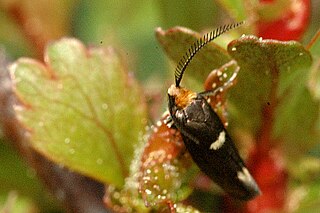
Incurvaria masculella, the feathered leaf-cutter, is a moth of the family Incurvariidae. It is widespread in Europe.
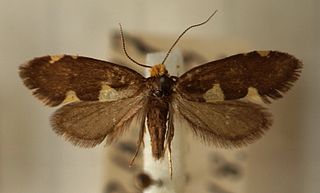
Incurvaria oehlmanniella is a moth of the family Incurvariidae. It is found in Europe and across the Palearctic to eastern Siberia.

Incurvaria pectinea is a moth of the family Incurvariidae. It is found in Europe.
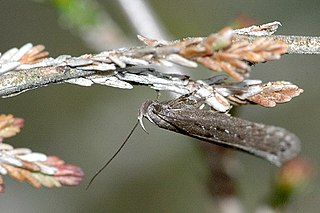
Neofaculta ericetella is a moth of the family Gelechiidae. It is found in Europe and Asia Minor.

Monochroa lucidella is a moth of the family Gelechiidae. It is found in most of Europe, except Spain, Switzerland and most of the Balkan Peninsula. It is recorded from the Near East and Siberia (Transbaikalia).
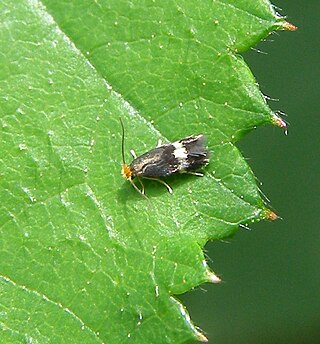
Stigmella aurella is a moth of the family Nepticulidae found in Africa, Asia and Europe. It was first described by the Danish zoologist, Johan Christian Fabricius in 1775. The larvae are leaf miners.

Stigmella centifoliella is a moth of the family Nepticulidae. It is found from Scandinavia to the Iberian Peninsula, Italy, Albania and Greece, and from Great Britain to Ukraine. It is also present in North Africa.

Stigmella trimaculella is a moth of the family Nepticulidae. It is found in most of Europe, east to the eastern part of Palearctic realm.

Stigmella continuella is a moth of the family Nepticulidae. It is found from Fennoscandia to the Pyrenees, Alps and Hungary, and from Ireland to central Russia and Ukraine, east to the eastern part of the Palearctic realm.
Stigmella filipendulae is a moth of the family Nepticulidae. It is found from Fennoscandia to the Alps and the Carpathians, and from Ireland to Poland. There is a disjunct population in Greece.

Stigmella glutinosae is a moth of the family Nepticulidae. It is found in all of Europe.

The banded apple pigmy is a moth of the family Nepticulidae. It is found in almost all of Europe, except Iceland and Norway.

Ectoedemia argyropeza is a moth of the family Nepticulidae. It is a widespread species, with a Holarctic distribution.

Ectoedemia occultella, the small birch leafminer, is a moth of the family Nepticulidae. It has a Holarctic distribution. It is found in most of Europe, east through Russia to Japan. It is also present in North America. Mines very similar to that of Ectoedemia occultella have been found on Rosaceae species in Nepal and Japan and these may belong to this species.

Trifurcula immundella, the broom pygmy moth, is a moth of the family Nepticulidae. It is found in western Europe, wherever the host plant occurs.

Bohemannia quadrimaculella is a moth of the family Nepticulidae. It is found from Norway and Sweden, south to France and from Ireland, east to the Czech Republic and Austria. It has also been recorded from Romania.

Incurvaria praelatella is a moth of the family Incurvariidae. It is found in all of Europe, except the Iberian Peninsula.

Carpatolechia decorella is a moth of the family Gelechiidae. It is found in most of Europe, as well as in Turkey, the Caucasus, Kazakhstan, North Africa and on the Canary Islands.

Apodia bifractella is a moth of the family Gelechiidae. It is found in most of Europe, as well as Turkey, the Caucasus and North Africa.
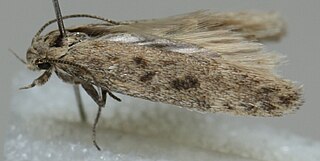
Scrobipalpa obsoletella, the summer groundling, is a moth of the family Gelechiidae. It is found in most of Europe, Turkey, the Caucasus, from Iran to Asian Russia (Transbaikal) and Mongolia. It has also been recorded from New Zealand, South Africa and North America, where it is probably an introduced species. The habitat consists of coastal salt marshes and sandy beaches.






















